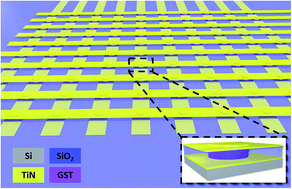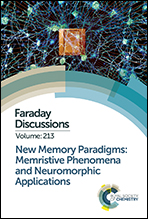Towards a 3D GeSbTe phase change memory with integrated selector by non-aqueous electrodeposition
Abstract
We have recently reported a new method for the electrodeposition of thin film and nanostructured phase change memory (PCM) devices from a single, highly tuneable, non-aqueous electrolyte. The quality of the material was confirmed by phase cycling via electrical pulsed switching of both 100 nm nano-cells and thin film devices. This method potentially allows deposition into extremely small confined cells down to less than 5 nm, 3D lay-outs that require non-line-of-sight techniques, and seamless integration of selector devices. As electrodeposition requires a conducting substrate, the key condition for electronic applications based on this method is the use of patterned metal lines as the working electrode during the electrodeposition process. In this paper, we show the design and fabrication of a 2D passive memory matrix in which the word lines act as the working electrode and nucleation site for the growth of confined cells of Ge–Sb–Te. We will discuss the precursor requirement for deposition from non-aqueous, weakly coordinating solvents, show the transmission electron microscopy analysis of the electrodeposition growth process and elemental distribution in the deposits, and show the fabrication and characterisation of the Ge–Sb–Te memory matrix.

- This article is part of the themed collection: New memory paradigms: memristive phenomena and neuromorphic applications


 Please wait while we load your content...
Please wait while we load your content...